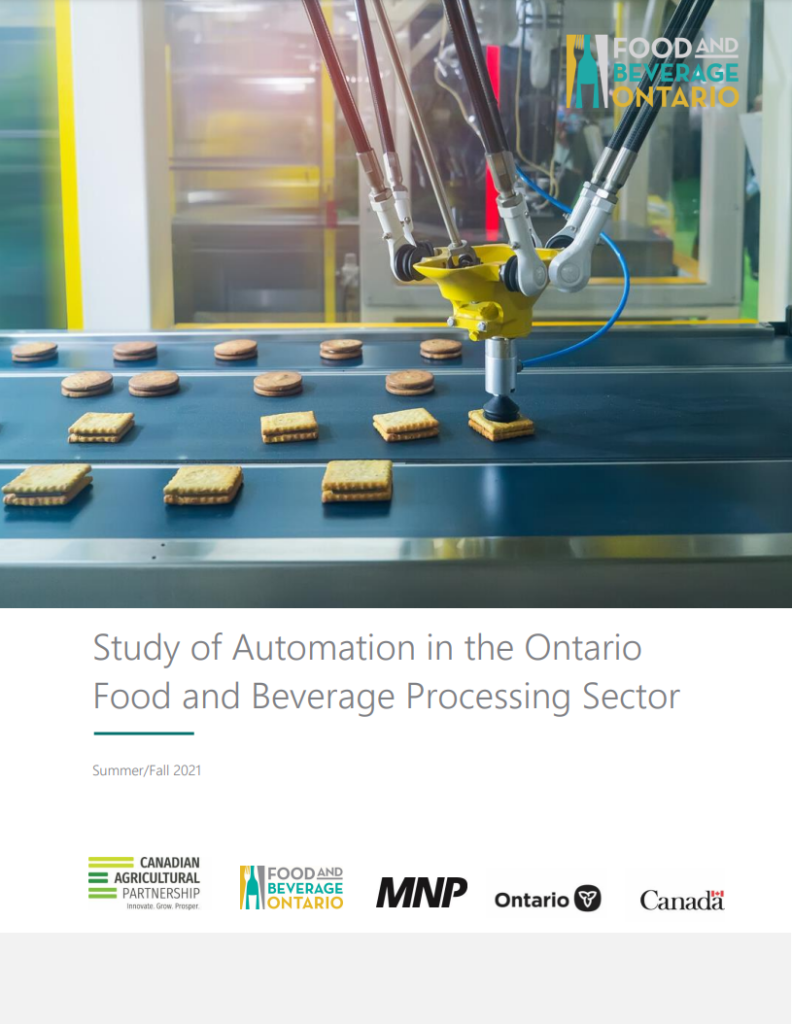Implementing facility automation & innovation
Around the globe, and in other manufacturing sectors similar to food, automation, innovation and technology are proven strategies to managing labour shortages and improving productivity and competitiveness.
To assess direct business value, Food and Beverage Ontario commissioned two reports conducted over the summer and fall of 2021.

Technology Implementation Guide for the Ontario Food and Beverage Sector
A technology implementation “how to guide” to support processors in implementing technology in their operations that will address labour challenges, in addition to mitigating COVID-19 risk factors.
To view the full report, please click HERE.

Technology Implementation Guide for the Ontario Food and Beverage Sector Highlights
Implementing technology can assist with solving labour challenges, provide new opportunities for upskilling employees, reduce pandemic impacts and create safer workplaces, however cost and finding the right solution are also factors.
Innovative technologies available to processor businesses include Artificial Intelligence, Internet of Things, automation and robotics, enterprise resource planning and manufacturing execution system, voice recognition technology, and cloud platforms.
To ensure successful technology implementation, the report provides a series of best management practices and key consideration for processor businesses.

Study of Automation in the Ontario Food and Beverage Processing Sector
A detailed review of current research and our consultations with businesses on the adoption of innovative automation and robotics as a means to address labour shortages and improve competitiveness and productivity.
To view the full report, please click HERE.
Study of Automation in the Ontario
Food and Beverage Sector Highlights
Offsetting/lowering labour costs, reduced costs of production and realized gains in productivity were ranked as the top three automation drivers by businesses participating in the report survey.
Financial barriers were found to be a major obstacle to business adoption of automation and robotics technology with the ‘cost of external automation and robotics maintenance service’ and ‘cost of operation delays of implementation’ most noted by survey respondents.
Grants for capital purchases/investment in technology and employee training support ranked highest by businesses as ‘areas for support’.
Lack of available skilled labour to operate automation and robotics equipment was cited as the top operational barrier by survey respondents.
Challenges due to lack of ‘domestic manufacturing of automation and robotics equipment’ continues to be a serious barrier for many businesses.
Report recommendations for government and industry leaders to increase automation in the sector:
- Broaden the scope and flexibility of funding programs for adoption of automation and robotics technology by businesses.
- Facilitate increased collaboration between the industry and Ontario post-secondary educational institutions to identify ways to address the shortage of skilled labour and training.
- Support and build capacity for the manufacturing in Ontario of automation equipment and technology solutions.

